This repository contains code for the paper
"Adversarial Generator-Encoder Networks" by Dmitry Ulyanov, Andrea Vedaldi, Victor Lempitsky.
This is how you can access the models used to generate figures in the paper.
-
First install dev version of pyTorch (see manual here) and make sure you have
jupyter notebookready. -
Then download the models with the script:
bash download_pretrained.sh
- Run
jupyter notebookand go throughevaluate.ipynb.
Here is an example of samples and reconstructions for imagenet, celeba and cifar10 datasets generated with evaluate.ipynb.
| Samples | Reconstructions |
|---|---|
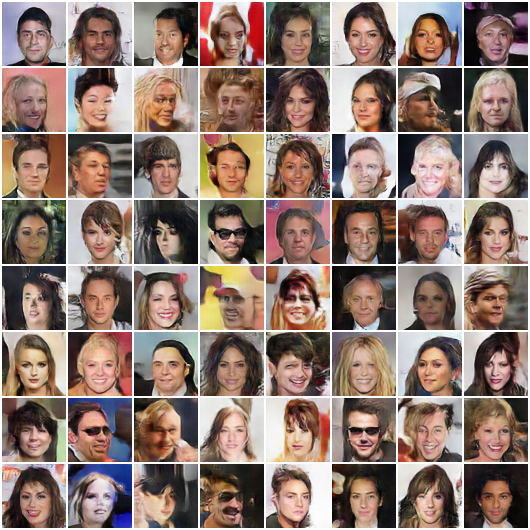 |
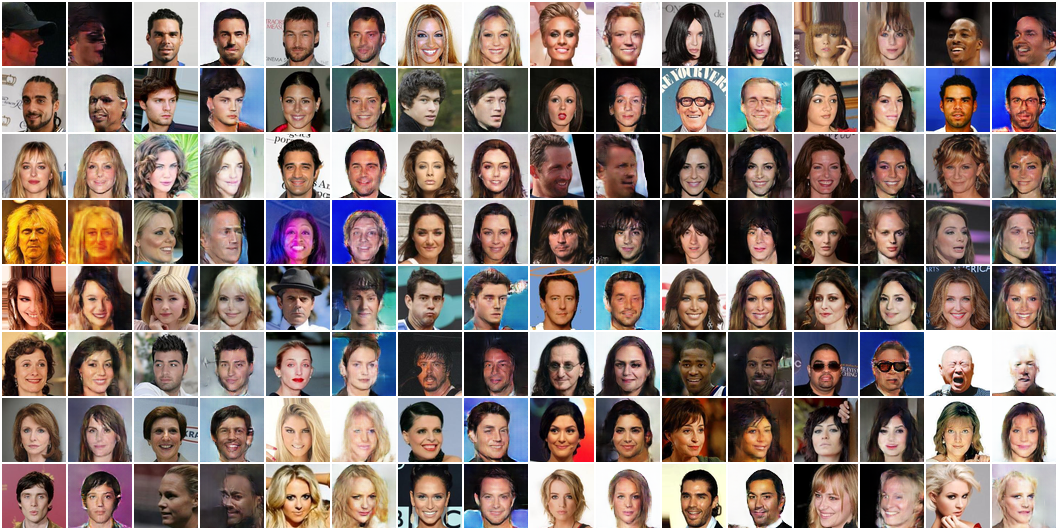 |
| Samples | Reconstructions |
|---|---|
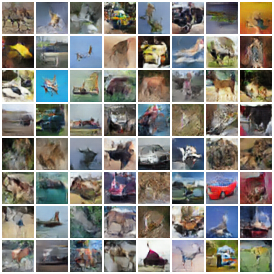 |
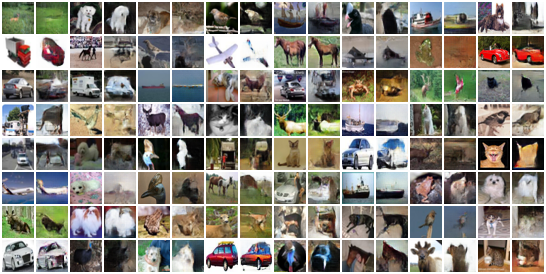 |
| Samples | Reconstructions |
|---|---|
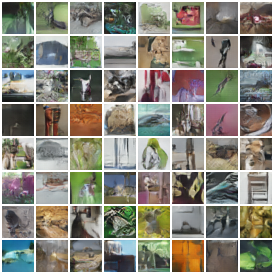 |
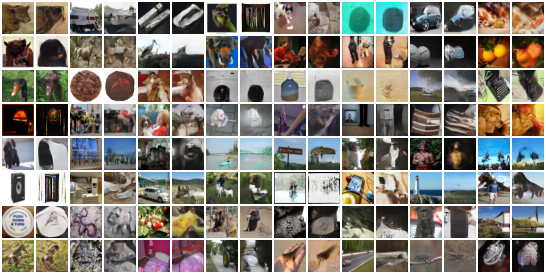 |
Use age.py script to train a model. Here are the most important parameters:
--dataset: one of [celeba, cifar10, imagenet, svhn, mnist]--dataroot: for datasets included intorchvisionit is a directory where everything will be downloaded to; for imagenet, celeba datasets it is a path to a directory with folderstrainandvalinside.--image_size:--save_dir: path to a folder, where checkpoints will be stored--nz: dimensionality of latent space-- batch_size: Batch size. Default 64.--netG:.pyfile with generator definition. Searched inmodelsdirectory--netE:.pyfile with generator definition. Searched inmodelsdirectory--netG_chp: path to a generator checkpoint to load from--netE_chp: path to an encoder checkpoint to load from--nepoch: number of epoch to run--start_epoch: epoch number to start from. Useful for finetuning.--e_updates: Update plan for encoder.<num steps>;KL_fake:<weight>,KL_real:<weight>,match_z:<weight>,match_x:<weight>.--g_updates: Update plan for generator.<num steps>;KL_fake:<weight>,match_z:<weight>,match_x:<weight>.
And misc arguments:
--workers: number of dataloader workers.--ngf: controlles number of channels in generator--ndf: controlles number of channels in encoder--beta1: parameter for ADAM optimizer--cpu: do not use GPU--criterion: Parametricparamor non-parametricnonparamway to compute KL. Parametric fits Gaussian into data, non-parametric is based on nearest neighbors. Default:param.--KL: What KL to compute:qporpq. Default isqp.--noise:spherefor uniform on sphere orgaussian. Defaultsphere.--match_z: loss to use as reconstruction loss in latent space.L1|L2|cos. Defaultcos.--match_x: loss to use as reconstruction loss in data space.L1|L2|cos. DefaultL1.--drop_lr: eachdrop_lrepochs a learning rate is dropped.--save_every: controls how often intermediate results are stored. Default50.--manual_seed: random seed. Default123.
Here is cmd you can start with:
Let data_root to be a directory with two folders train, val, each with the images for corresponding split.
python age.py --dataset celeba --dataroot <data_root> --image_size 64 --save_dir <save_dir> --lr 0.0002 --nz 64 --batch_size 64 --netG dcgan64px --netE dcgan64px --nepoch 5 --drop_lr 5 --e_updates '1;KL_fake:1,KL_real:1,match_z:0,match_x:10' --g_updates '3;KL_fake:1,match_z:1000,match_x:0'
It is beneficial to finetune the model with larger batch_size and stronger matching weight then:
python age.py --dataset celeba --dataroot <data_root> --image_size 64 --save_dir <save_dir> --start_epoch 5 --lr 0.0002 --nz 64 --batch_size 256 --netG dcgan64px --netE dcgan64px --nepoch 6 --drop_lr 5 --e_updates '1;KL_fake:1,KL_real:1,match_z:0,match_x:15' --g_updates '3;KL_fake:1,match_z:1000,match_x:0' --netE_chp <save_dir>/netE_epoch_5.pth --netG_chp <save_dir>/netG_epoch_5.pth
python age.py --dataset imagenet --dataroot /path/to/imagenet_dir/ --save_dir <save_dir> --image_size 32 --save_dir ${pdir} --lr 0.0002 --nz 128 --netG dcgan32px --netE dcgan32px --nepoch 6 --drop_lr 3 --e_updates '1;KL_fake:1,KL_real:1,match_z:0,match_x:10' --g_updates '2;KL_fake:1,match_z:2000,match_x:0' --workers 12
It can be beneficial to switch to 256 batch size after several epochs.
python age.py --dataset cifar10 --image_size 32 --save_dir <save_dir> --lr 0.0002 --nz 128 --netG dcgan32px --netE dcgan32px --nepoch 150 --drop_lr 40 --e_updates '1;KL_fake:1,KL_real:1,match_z:0,match_x:10' --g_updates '2;KL_fake:1,match_z:1000,match_x:0'
Tested with python 2.7.
Implementation is based on pyTorch DCGAN code.
If you found this code useful please cite our paper
@article{ulyanov2017age,
title={Adversarial Generator-Encoder Networks},
author={Ulyanov, Dmitry and Vedaldi, Andrea and Lempitsky, Victor},
journal={arXiv preprint arXiv:1704.02304},
year={2017}
}
